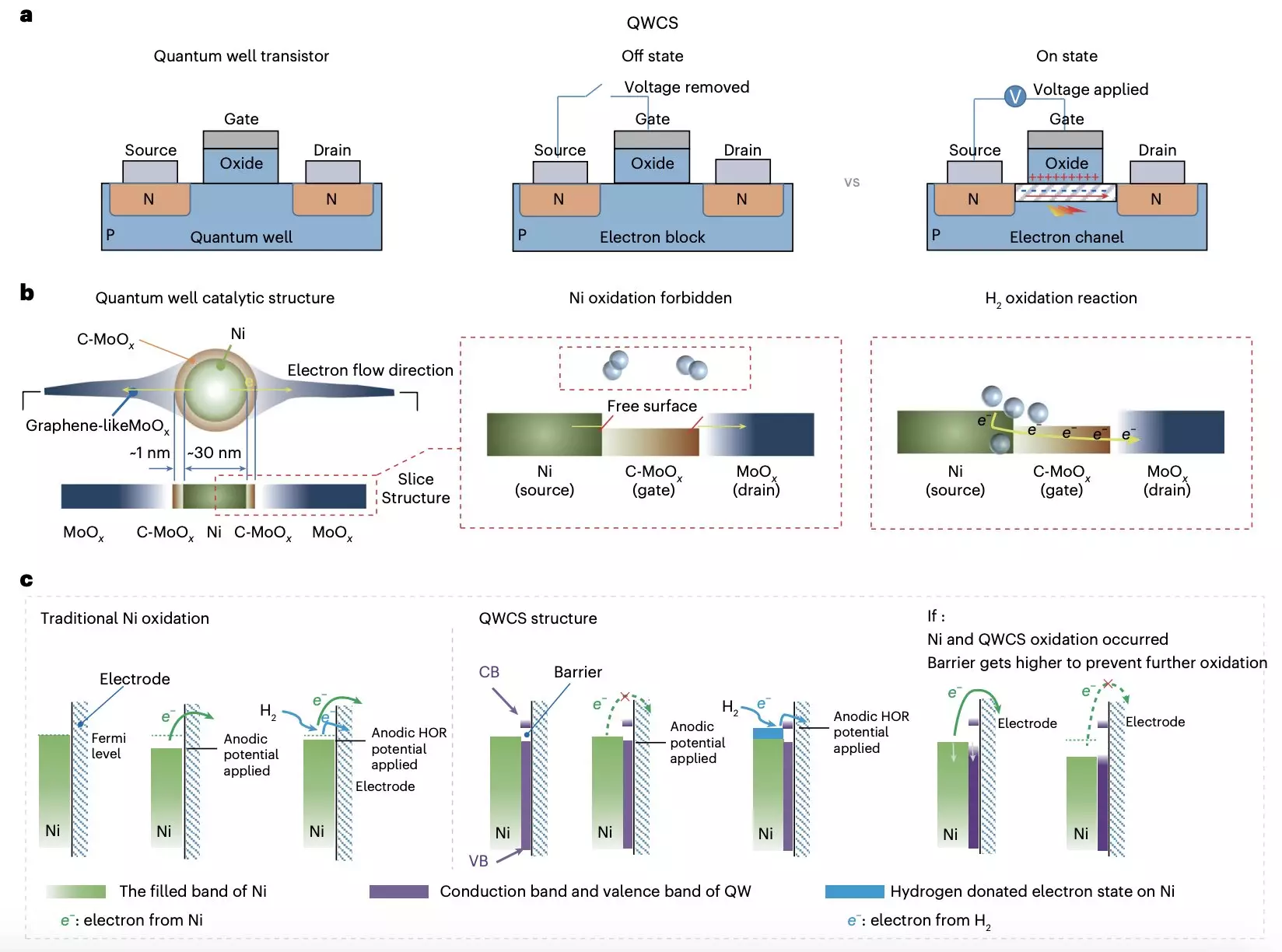Fuel cells emerge as a beacon of hope in the quest for clean energy, offering a method to generate electricity through electrochemical processes instead of traditional combustion. This technology holds the potential for powering a variety of applications, from electric vehicles to portable electronics and heavy machinery. While fuel cells present compelling advantages such as high efficiency and reduced emissions, their widespread adoption has been hampered by the reliance on costly materials and precious metal catalysts. However, researchers are innovating to address these challenges, particularly through the exploration of anion-exchange-membrane fuel cells (AEMFCs) that utilize more affordable and abundant materials.
AEMFCs represent a paradigm shift in fuel cell technology. By utilizing readily available, low-cost catalysts instead of rare precious metals like platinum, AEMFCs may significantly lower production costs, making them more accessible for various applications. The potential for enhanced market penetration is immense, as this technology can provide a sustainable alternative to fossil fuels and conventional energy generation methods. Leading research teams around the globe are dedicating efforts to improve AEMFC designs, which promise not only economic benefits but also a reduction in environmental impact.
Despite the progress made, one considerable hurdle remains: the propensity of non-precious metal catalysts for self-oxidation—a process that leads to the irreversible deterioration of fuel cells. This issue has stymied the effectiveness of many AEMFC implementations to date. However, promising advancements have emerged from the collaborations between Chongqing University and Loughborough University. Their research presents a novel solution that employs a quantum well-like catalytic structure (QWCS). This innovative design consists of quantum-confined metallic nickel nanoparticles, which mitigate the self-oxidation issue present in typical AEMFC catalysts.
The introduction of QWCS is a significant leap toward enhanced catalyst stability. The ingenious design features nickel nanoparticles encapsulated within a heterojunction made of carbon-doped MoOx and amorphous MoOx. This structuring creates a unique environment where electrons can be selectively transferred during the hydrogen oxidation reaction while preventing the detrimental self-oxidation of the nickel catalyst. As outlined by the lead researchers, this arrangement protects against the degradation that typically plagues standard non-precious metal catalysts, which has significant implications for the durability and longevity of fuel cells.
The key to the QWCS’s success lies in its ability to create an energy barrier that allows electrons produced in the catalytic process to effectively cross into the nickel nanoparticle realm while simultaneously withholding the electrons from the nickel that could lead to unwanted oxidation. By maintaining the integrity of the catalyst, the QWCS design positions AEMFCs for substantial improvements in performance metrics.
The real-world implications of this research are compelling. The newly developed Ni@C-MoOx catalyst demonstrated exceptional stability and performance, sustaining high catalytic activity with no performance decline even after 100 hours of operation under harsh test conditions. The results were transformative, with the AEMFC achieving a remarkable power density of 486 mW mgNi^-1 and maintaining this output during repeated startup and shutdown cycles—a challenge that typically undermines the functionality of conventional fuel cells.
The advancements made possible by the QWCS framework could catalyze (pun intended) a transformation in the fuel cell industry. The capacity of the Ni@C-MoOx to withstand hydrogen starvation conditions during operational cycles further emphasizes its potential for practical applications in diverse energy systems.
The strategic design principles embodied in the QWCS can inspire further innovations in catalyst development beyond AEMFCs. The focus on utilizing quantum confinement to bolster the stability of non-precious metals opens an array of opportunities across different sectors where robust catalytic materials are needed. As researchers continue to refine and explore these methodologies, we can anticipate not just improvements in fuel cell technology but possible breakthroughs across various applications in clean energy.
The advancement in AEMFC research signifies a vital step towards making fuel cell technology more reliable, cost-effective, and sustainable. With continued innovation and commitment to overcoming existing challenges, the path forward in clean energy solutions appears increasingly promising.

